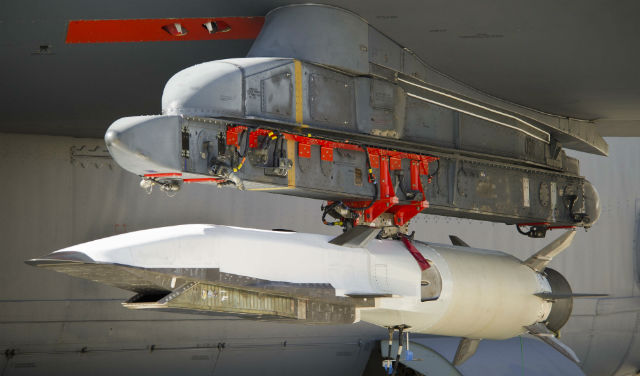The US Air Force Research Laboratory (AFRL) has pinpointed an aerodynamic fin and natural resonance as the likely cause of the 14 August failure of the Boeing X-51 experimental hypersonic vehicle.
"At about 15 seconds, inexplicably, the upper right fin became unlocked, and the fin, because of the aerodynamic forces that were seen, pitched," says Charlie Brink, the AFRL's X-51 programme manager, "and in a few seconds moved from zero angle-of-attack to full trailing edge down. The whole stack assembly started to do a very slow corkscrew," he adds.
Having become unstuck and mobile several seconds before it was meant to, the fourth fin was uncontrollable by the time the other three aerodynamic fins were powered on; about 2s before the booster rocket detached and fell away.
 |
|---|
US Air Force The scramjet-engined X-51 was released from a B-52 bomber |
"The actuator was either damaged or stuck, so for about a second and a half the booster was struggling to maintain aerodynamic control, and we had three fins controlling a vehicle that requires four," says Brink. The X-51 lost control before its scramjet engine was scheduled to ignite.
While technicians quickly surmised that the fin had become unstuck, the investigation ruled out an erroneous command signal or electromagnetic interference. It now appears most likely that the stack (as the vehicle plus booster is known) began to vibrate at a frequency sympathetic to a crucial fin part.
"It looks like the second bending node at the stack, the frequency at which that occurs happens at a key frequency that is very close to the lock mechanism that holds the actuator. That's very preliminary," says Brink, but it "looks like we had some cross-coupling between the natural resonance of the stack and the natural resonance of that actuator."
The first flight of the X-51 remains the most successful, in conventional terms, having maintained scramjet-powered hypersonic flight for more than 200s before a seal in the engine failed. The second flight failed due to an inlet unstart as the engine transitioned from ethylene to JP-7 fuel, with the test having provided reams of aerodynamic data but no hypersonic flight.
The fourth and final flight of an X-51 is planned late in the first quarter or early in the second quarter of 2013.
Source: Flight International



















